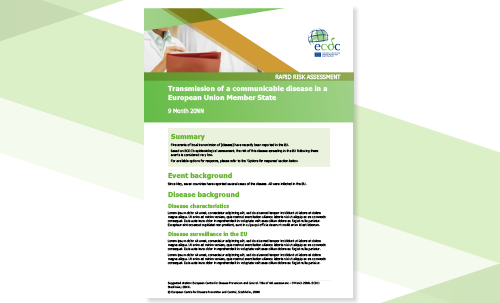Risk assessment: Outbreak of acute respiratory syndrome associated with a novel coronavirus, Wuhan, China; first update

A novel coronavirus (2019-nCoV) has been isolated and considered the causative agent of the cluster of 448 pneumonia cases in the area of Wuhan, Hubei province in China, as well as of the four travel-associated cases in Thailand, Japan and South Korea.
On 31 December 2019, the Wuhan Municipal Health Commission in Wuhan City, Hubei province, China reported a cluster of pneumonia cases of unknown aetiology, with a common reported link to Wuhan’s Huanan Seafood Wholesale Market (a wholesale fish and live animal market selling different animal species).
On 9 January 2020, China CDC reported that a novel coronavirus (2019-nCoV) had been detected as the causative agent and the genome sequence was made publicly available. Sequence analysis showed that the newly-identified virus is related to the SARS-CoV clade. Detection systems have been developed and are available for the Member States through WHO and the European Virus Archive global catalogue.
As of 20 January 2020, a total of 295 laboratory-confirmed cases infected with 2019-nCoV have been reported, 291 from Wuhan, China and four travel-associated from Thailand (2), Japan (1) and South Korea (1). Four deaths have been reported among the cases. Chinese health authorities have confirmed human-to-human transmission and 15 healthcare workers are reported to have been infected in Wuhan. The original source of the outbreak remains unknown and therefore further cases and deaths are expected in Wuhan, and in China. It is possible that further cases will also be detected among travellers from Wuhan to other countries.
There are considerable uncertainties in assessing the risk of this event, due to lack of detailed epidemiological analyses.
On the basis of the information currently available, ECDC considers that:
- the potential impact of 2019-nCoV outbreaks is high;
- further global spread is likely;
- there is currently a moderate likelihood of infection for EU/EEA travellers visiting Wuhan;
- there is a high likelihood of case importation into countries with the greatest volume of people travelling to and from Wuhan (i.e. countries in Asia);
- there is a moderate likelihood of detecting cases imported into EU/EEA countries;
- adherence to appropriate infection prevention and control practices, particularly in healthcare settings in EU/EEA countries with direct links to Wuhan, means that the likelihood of a case reported in the EU resulting in secondary cases within the EU/EEA is low.